Bald eagle photos
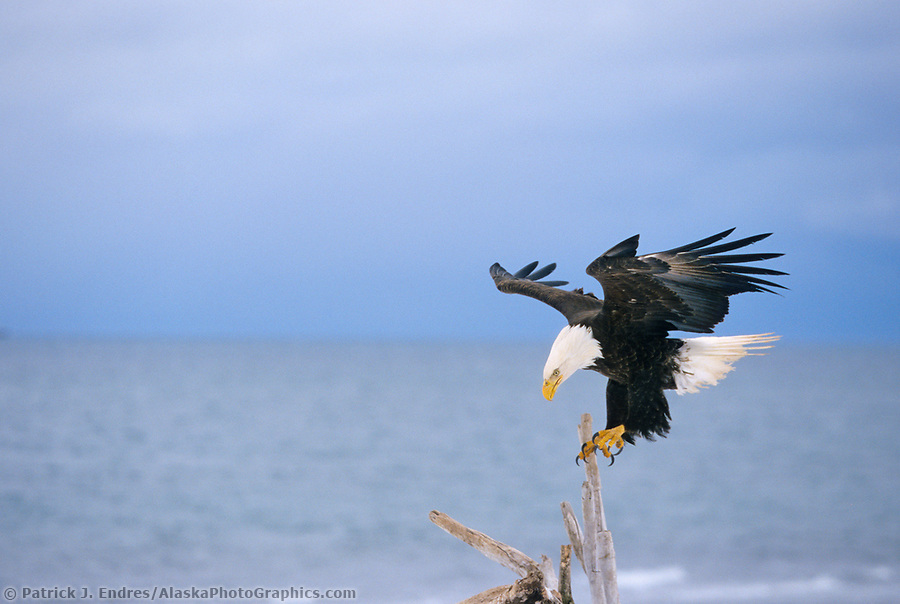
Bald eagle lands on a driftwood branch, Homer, Alaska (Patrick J. Endres / AlaskaPhotoGraphics.com)
Bald eagle (Haliaeetus leucocephalus)
Bald eagles thrive in Alaska due to its wide open spaces and abundant food sources, and there are more in Alaska than anywhere else in the United States. Eagles congregate in many locations along Alaska’s coastal shores, where salmon play an essential role in their diet. Their distinct white head in mature birds makes them easy to identify. All bald eagle photos may be licensed as stock photos for business use or purchased as fine art prints for your home or office decor. They were taken at various locations across Alaska. Since bald eagles favor coastal regions where water is abundant, most were taken in Alaska’s southeast and southcentral regions.
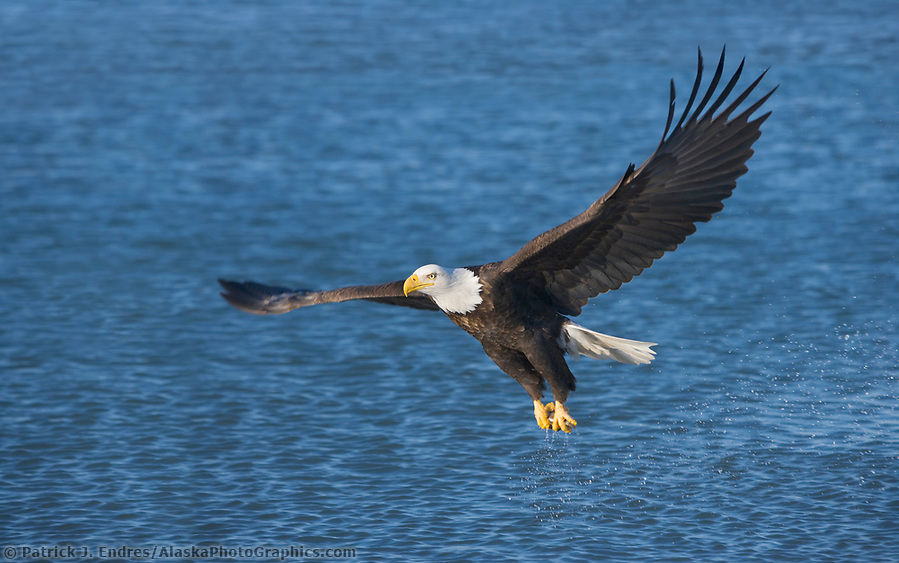
Bald eagle grabs fish from the water in Homer, Southcentral Alaska. (Patrick J. Endres / AlaskaPhotoGraphics.com)
Description
The bald eagle is named for its conspicuous white head and tail, which appears at approximately five years old. Immature birds lack this easily identifiable characteristic and can be confused with the Golden Eagle. The Bald Eagle is Alaska’s largest resident bird of prey (the Steller’s Sea Eagle is larger) with a wingspan up to 7 1/2 feet (2.3 m) long and weights of 8 to 14 pounds (3.6-6.4 kg). Like many raptors, females are larger than males.
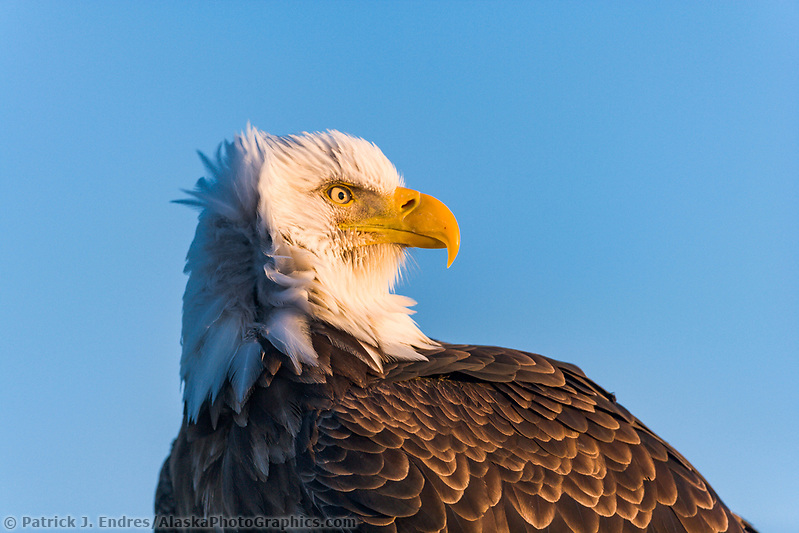
Bald Eagle portrait in Homer, Southcentral Alaska (Patrick J Endres / AlaskaPhotoGraphics.com)
Populations
Bald Eagles live along Alaska’s coast, offshore islands, and Interior lakes and rivers. The highest nesting densities occur on the islands of Southeast Alaska. Most Bald Eagles winter in southern Alaska, but some leave the state during cold months. Over 3,000 birds may congregate in late fall and early winter to feed on spawned-out salmon in the Chilkat Valley.
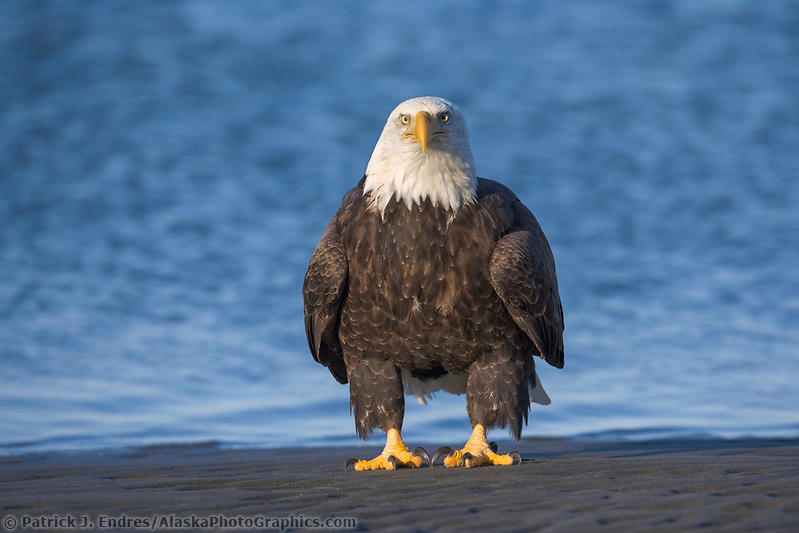
A bald eagle stands on a sandy beach along the coast of the spit in Homer, Southcentral Alaska (Patrick J Endres / AlaskaPhotoGraphics.com)
Nesting
Bald Eagles often use and rebuild the same nest each year. Nest trees are usually close to water, afford a clear view of the surrounding area, and often provide sparse cover above the nest. In Southeast Alaska, Bald Eagles typically nest in old-growth timber along saltwater shorelines and mainland rivers. Eagles in Southcentral Alaska nest in old cottonwood trees near water. Nest building begins in April, and males and females gather nest material. Two (sometimes three) dull white or creamy yellow eggs are laid several days apart in late April. Incubation lasts about 35 days. When the young hatch, sibling rivalry is standard, and the weaker, usually the younger chick, is killed or starved. The surviving young leave the nest after approximately 75 days. Nest trees tend to be the largest in the stand and are usually 400 years old. In treeless Aleutian areas, nests are located on rock pinnacles or the ground.
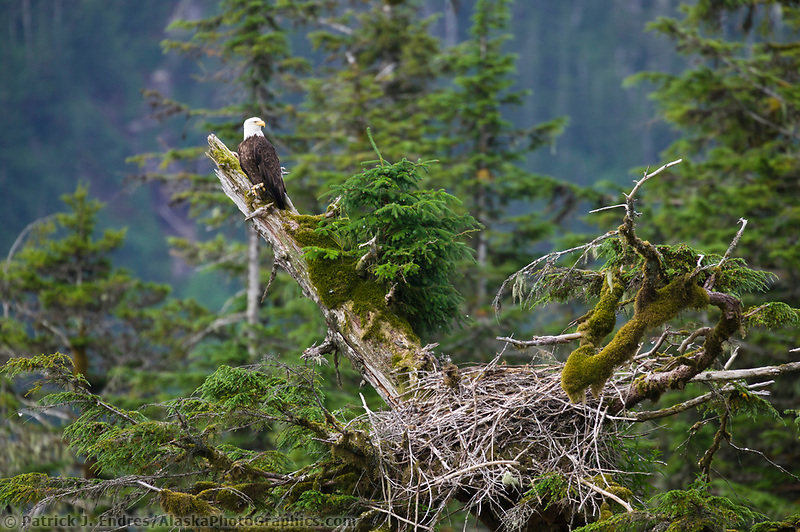
Bald eagle perched on a branch in a tree by its nest, Western Prince William Sound, Alaska (Patrick J. Endres / AlaskaPhotoGraphics.com)
Food habits
Fish are the main diet of the Bald eagle, in addition to herring, flounder, pollock, and salmon. Eagles also prey upon waterfowl, small mammals, sea urchins, clams, crabs, and carrion.
Management protection
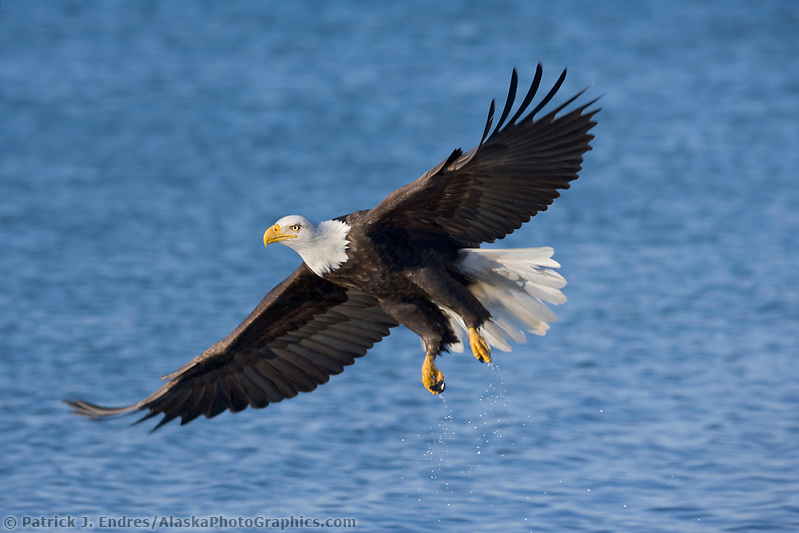
Bald Eagle, Homer, Southcentral Alaska (Patrick J. Endres / AlaskaPhotoGraphics.com)
With Alaska’s statehood in 1959, the Bald Eagle in Alaska received federal protection under the Bald Eagle Protection Act of 1940. This act made it illegal to kill or possess an eagle, alive or dead, or any part of an eagle, including feathers. Bald Eagles were endangered or eliminated throughout most of the Lower 48 states as a result of habitat destruction, illegal shooting, pesticides, and poisoning. Bald Eagle populations are recovering in many states because of solid support for endangered species’ wildlife habitat. Alaska’s populations remain healthy, but the destruction of nest sites by logging, deterioration of salmon spawning streams by logging, mining, and other development, and increased human disturbance of eagles in remote areas pose potential problems for Alaska’s Bald Eagles. In 1972, the Alaska State Legislature established a stretch of the Chilkat River as a critical bald eagle habitat to protect the large numbers found there in winter. In 1982, a portion of the surrounding area was established as the Alaska Chilkat Bald Eagle Preserve.
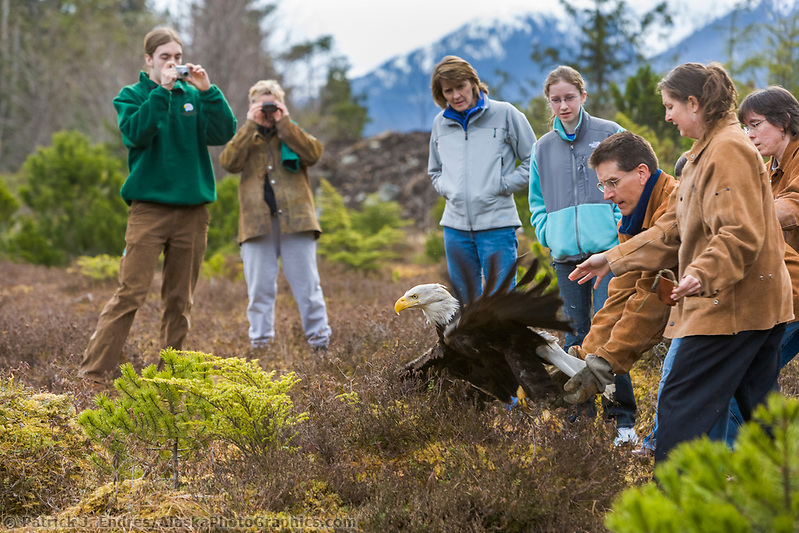
The recovered bald eagle is released back into the wild at the Alaska Raptor Rehabilitation Center in Sitka, Alaska. (Patrick J Endres / AlaskaPhotoGraphics.com)
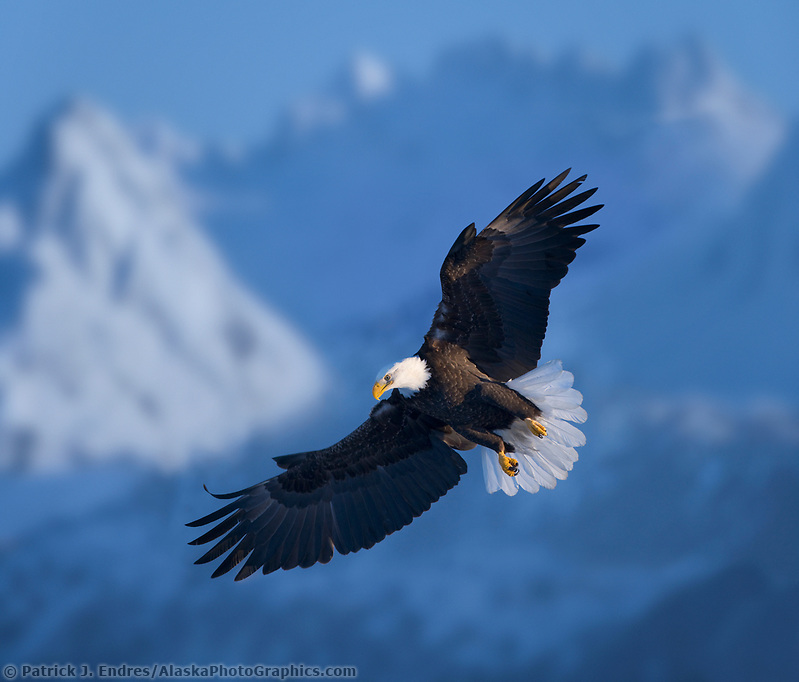
Bald Eagle, Homer, Southcentral Alaska (Patrick J. Endres / AlaskaPhotoGraphics.com)
Text adapted from the Alaska Department of Fish and Game Wildlife Notebook series








